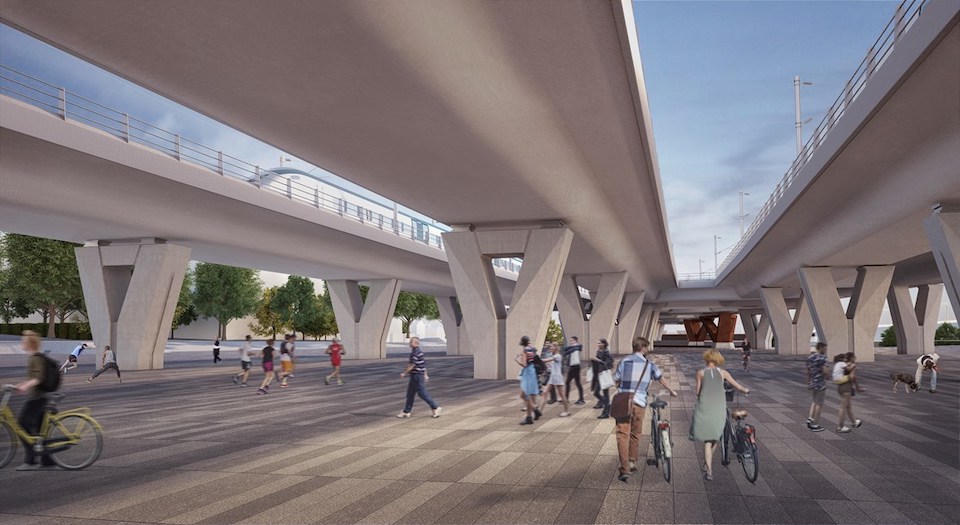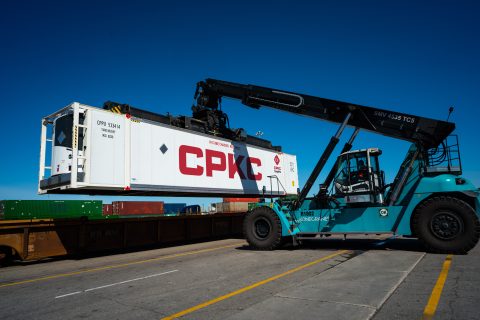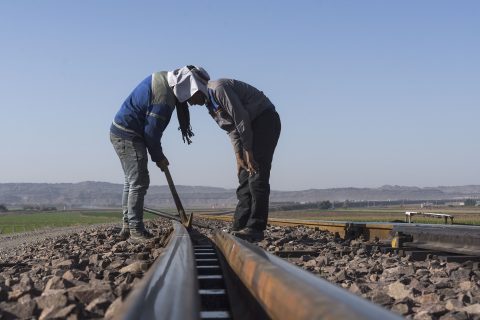Rail freight contributes to raising Birmingham’s first HS2 viaduct pier

Britain’s high-speed rail project, HS2, is taking shape in Birmingham. The first bridge pier on the 300 metres long Curzon Viaduct has been topped out and revealed to the city. The project managers have hailed the structure as an environmental triumph. Although freight trains will never likely use the bridge, HS2 is relying heavily on rail freight for the construction phase.
Birmingham’s city centre has changed with the completion of the first V-shaped pier for the elevated approach that will bring high-speed trains into the new Curzon Street Station. The five-metre-tall structure is the first pier to be installed for the ‘Curzon No.3 Viaduct’. This bridge will be the final approach to the new seven-platform HS2 station in the city centre. In total, 30 piers will be installed for the viaduct, with heights varying between five and six metres above ground level.
Green rail freight and green materials
Delivery of materials by rail is reducing the environmental impact of building the line. To further cut carbon, a steel industry by-product called ‘ground granulated blast-furnace slag’ (GGBS) has been incorporated into the pier manufacturing as an eco-friendly concrete alternative to a traditional concrete mix. Also known as slag sand, GGBS will reduce the embedded carbon of the piers. According to the HS2 company, this will help ensure that the structure remains operational for over 120 years.
“It’s fantastic to see this first viaduct pier complete on the Curzon Street site, which starts to bring the design vision for this iconic structure to life”, said David King, the HS2 Senior Project Manager for Curzon Street. “Once built, Curzon Street Station will put Birmingham at the heart of the new zero-carbon high speed network. We’re also pleased to see eco-friendly materials being used in the construction method, supporting HS2’s ambition to cut carbon across the project.”
Bridging Birmingham’s rail and water heritage
The pier was built in two segments, starting with a stem pour which links the viaduct foundation with the V-shaped part of the pier. The construction team then lifted the prefabricated steel cage above the stem and installed steel panels around the cage. Concrete was poured into the formwork and left to cure for one week before removal of the panels, forming the pier’s V shape. A modified version will be necessary for part of the 300-metre length. Four steel tripod piers will be erected to span over the Digbeth Branch Canal, part of Birmingham’s extensive legacy of industrial waterways which now form an iconic part of the city’s heritage. The viaduct will also span over Birmingham’s present day city centre rail freight infrastructure.

Each pier will take up to four weeks to be fully installed on site. After the piers are in place, teams will begin to form the deck spans connecting the piers using system falsework and formwork with the longest span between each pier stretching over 28 metres across the site. The entire HS2 project is expected to cost in excess of 100 billion pounds (119 billion euro), and is widely regarded as Europe’s biggest civil engineering project. Around 9000 people are working on the project in Birmingham and the West Midlands region, representing nearly one third of the entire workforce.
You just read one of our premium articles free of charge
Want full access? Take advantage of our exclusive offer





